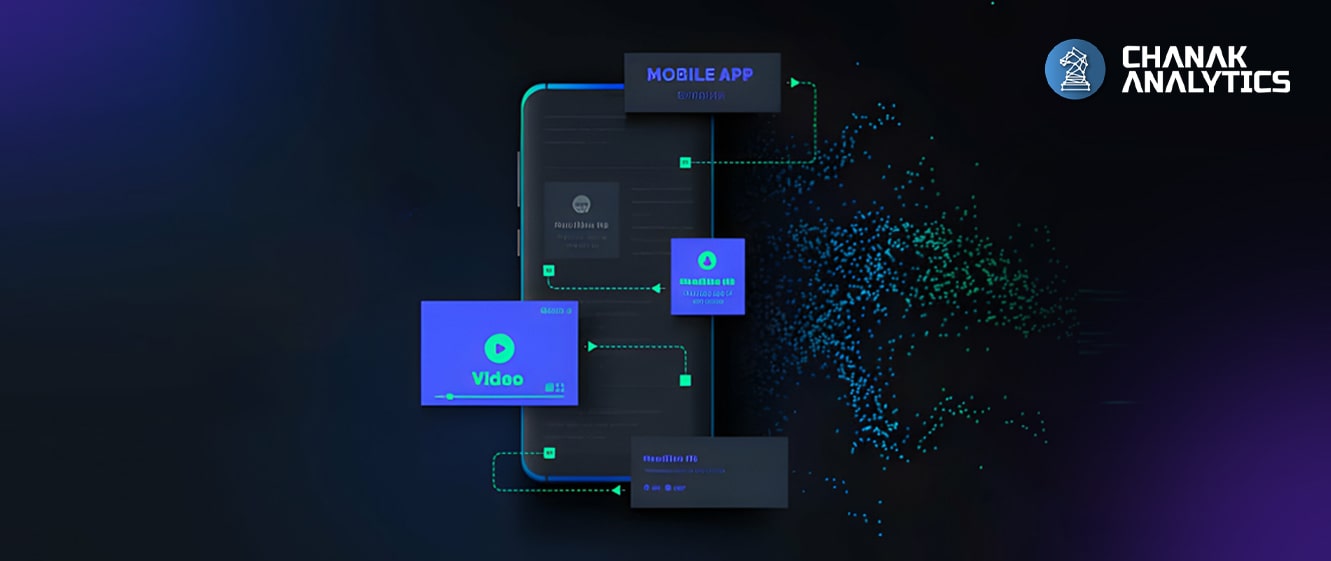Design Thinking: Solving Real-World Problems through UI/UX


In today’s digitally driven world, design thinking is the magic spell that generates user-friendly interfaces and seamless experiences.
Picture this: you are not just working on enhancing the website’s interface or an app; you are addressing real-world issues for real people. At the onset of design thinking, it is crucial to grasp the underlying users’ sentiments with their needs, pain points, and what would satisfy them. Now that you have these insights, you can generate ideas, implement prototyping, and test them iteratively in fast cycles. It is a collaborative and innovative approach that allows for new ways of thinking and overcoming failure as a growth facilitator.
Through the user involvement in the look and feel of interface design, design thinking creates UI/UX which is both visually appealing and useful. So, the next time you plunge into web development, remember that it is more than simply pixels and code; it is also about issue-solving and improving user experience.
Understanding UI/UX Design
Nowadays, the digital world is so prevalent that UX/UI design knowledge is essential for each website development project. It’s not just about aesthetics. It is more about the process of providing a satisfactory experience for users. Here’s a quick look into the world of UI/UX:
- User-Centric Approach: UI/UX in design strives to direct users’ attention to relevant elements. It’s about providing the user experience by meeting their needs, desires, and operating habits.
- Solving Real-World Problems: Designers begin by brainstorming potential solutions to the design issues they are working on. Everything will revolve around one critical aspect: identifying problems and developing complete assistance to fix the situation.
- Creative Designer’s Role: The creative designer remains a compulsory member of the UI/UX design team. Fusing aesthetics with functionality, they make attractive and very convenient interfaces.
- Prototyping for Perfection: Prototyping is a crucial stage of the design process. It permits designers to try out some ideas, receive feedback, and edit as much as possible to reach the most captivating user interface.
Since their primary focus is UI/UX design and design thinking, web development companies can create websites and applications that not only look creative and professional but also offer customers a smooth user experience.
How Does Design Thinking Transform Real-World Challenges?
The digital world of website development demands fast-paced problem-solving. User Interface (UI) and User Experience (UX) design techniques are more systematic and creative approaches to design thinking, which aids in the resolution of these issues. Let’s take a look at how it plays an important role in tackling numerous real-world issues.
• The Design Thinking Process
- Design thinking isn’t only a vogue; it’s a set of step-wise rules that provide a model of problem-solving and innovation.
- It involves progression through a series of steps, each one is very essential in solving problems successfully.
- The stages of the UX design process are usually empathizing, defining, ideating, prototyping, and testing.
• Empathizing with Customers: Identifying and Easing Their Struggles
- The first level of design thinking is empathy. It is critical to understand the problems and challenges that clients face.
- By doing their research and proceeding with observations, designers can put themselves in users’ shoes and thus learn about their needs.
- Through this step, the design process becomes more human-centred and offers solutions that apply to the people we aim to serve.
• Crafting Clear Problem Statements
- It’s time to describe the problem precisely now that empathy has been created.
- But this is the procedure for compiling the body of current research material into a clear problem statement.
- A clear characterization of the problem is required for idea development and solution planning.
• Ideating and Brainstorming Solutions
- Ideation is where the mind opens up to the flow of creativity. It is about coming up with numerous options while remaining objective.
- Brainstorming sessions which are often collaborative benefit from diverse perspectives and original ideas.
- No matter how strange an idea might sound, it may be the cornerstone for a real breakthrough solution.
• Prototyping and Testing
- Prototyping provides a possibility for making ideas real (of course, in a primitive shape).
- Such prototypes act as a bridge between the designers and the users who feed them with valuable data.
- Testing prototypes provides designers with valuable feedback to help them improve the user experience. It ensures that solutions are well received by the people for whom they are intended.
• Implementing and Iterating
- Implementation is the stage when you move from design to reality.
- It is the process of transforming into final functional solutions ready to implement.
- Nevertheless, Design thinking does not end here; it is a continuous process of progress.
- Learning from user feedback promotes a continual cycle in which solutions are customized to their changing demands and evolving scenarios.
• Using Design Thinking for Real-World Impact
- Design thinking transcends disciplinary boundaries and is not limited to UX/UI design, whether it is applied to healthcare or education.
- Its human-centred approach ensures that the solutions are both functional and meaningful.
- Design thinking fosters innovation while considering the actual impact on the real world.
Designers have the knowledge and creativity to cope with real-world difficulties if they properly follow the steps of the UX design process, which begin with empathy and end with iteration. As a result, whether building a new app or improving a website’s navigation, Design Thinking is the tool that web development companies require to produce vital things.
How Does Design Thinking Influence UI/UX Design?

Design thinking is the key that changes the scene of UI/UX design by putting the user’s needs and experiences first. Here’s how it’s reshaping the digital landscape:
- Empathy-Driven Solutions: A design thinking methodology starts by exploring and grasping users’ needs to the core. Diving into users’ subconsciousness, designers immerse their interfaces into users’ experiences and preferences.
- Iterative Process: UI/UX is not a linear process anymore. Design thinking promotes a cyclic thinking process during which designers test, prototype, and improve high-quality solutions based on feedback from end users.
- Collaborative Approach: Design thinking encourages collaboration among cross-functional teams, comprising designers, developers, and stakeholders. This is to achieve user-centric interfaces through employing different perspectives for creation.
- Focus on Innovation: Since design thinking permits users to conduct exploration and try new things, it cultivates innovation in interaction design (UX/UI). It encourages creative designers to think creatively and deliver innovative solutions to challenging problems.
- Continuous Improvement: Design thinking cultivates a culture of continuous advancement, where designers are constantly seeking feedback and working to improve their designs even better for the betterment of the users.
Essential Tools and Resources for Infusing Design Thinking into UI/UX

A company’s UI/UX projects might benefit from a design thinking approach. It would certainly make a website and app more user-centric and practical. Here are some tools and resources to help you get started:
- User Research Platforms: Places like UserTesting and UserZoom, offering usability testing and user surveys, give remarkable understandings of users’ behaviour and tastes.
- Prototyping Tools: Simple yet effective tools such as Sketch, Figma, and Adobe XD offer designers the opportunity to rapidly produce prototypes. This makes it possible for stakeholders and users to give feedback and validate designs quickly.
- Design Thinking Workshops: Having workshops with cross-functional teams can create a setting for ideation and collaboration. That often provides innovative solutions to real-life problems.
- Design Sprints: Emulating the Google Ventures Design Sprint template ensures that design procedures are completed quickly. Doing so allows teams to develop and test a variety of ideas in a short period.
- Online Courses and Communities: Course platforms such as Coursera, Udemy, and Designmodo provide courses and resources to learn and earn practical skills in applying design thinking to their projects.
Human-Centric Solutions in UI/UX Design
Design thinking does not just focus on making things look aesthetically pleasing; it’s more about solving actual problems. Through the application of user-centered design, UI/UX designers can develop interfaces that are understandable, quick, and engaging. You should be aware that a website or app which may only be aesthetically pleasing to the eye but is not `just as easy or even more difficult to use’ will have no appeal to potential users. Therefore, whether you are creating a new website or designing a new concept, always keep the user information in mind. That will not only fulfil but also exceed their expectations in this fast-paced digital world.
Join the community
Join our 400,000+ person community and contribute to a more private and decentralized internet. Start for free.


